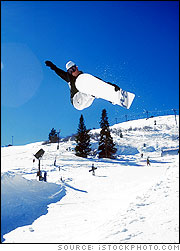The Olympics are a rich learning opportunity. We can learn about global politics, “celebration capitalism”, gender identity, gender politics, fascism, to name just a few analytic frames for the Olympic Games. We can also learn a great deal about evaluation from the Olympics. While in graduate school I took an evaluation class with Terry Denny and we tried to understand educational evaluation by investigating how evaluation was done in other contexts. It was fun and instructive to consider how wine tasting, diamond grading, dog trials & shows, and yes judging sports might help us to think more carefully and creatively about evaluating educational programs.
So the Olympics give us a peek at how evaluation is done within many specific sports. And they aren’t all the same!
For example, judging snowboarding involves five judges grading each snowboarder’s run on a scale of .1 – 10, with deductions for specific errors. The judges have specific components of the snowboarder’s run to judge: one judge scores the standardized moves, another scores the height of maneuvers, one scores quality of rotations, and two score overall impression. There are bonus points for really high maneuvers… an additional point is given for every additional 30 centimeters the competitor reaches above the lip of the pipe.
Falls and other mistakes lead to deductions. The format for point deduction in halfpipe is as follows:
0.1–0.4 for an unstable body, flat landing, or missed airs
0.5–0.9 for using hand for stability
1.0–1.5 for minor falls or body contact with the snow
1.6–1.9 for complete falls
2.0 for a complete stop
Note that this is not the same system used in judging all snowboarding… the World Snowboard Tour uses a different system.
So over the next couple of weeks I’ll be posting about what evaluation practitioners and theorists might possibly learn from the judging fest in Sochi.
 Follow
Follow
